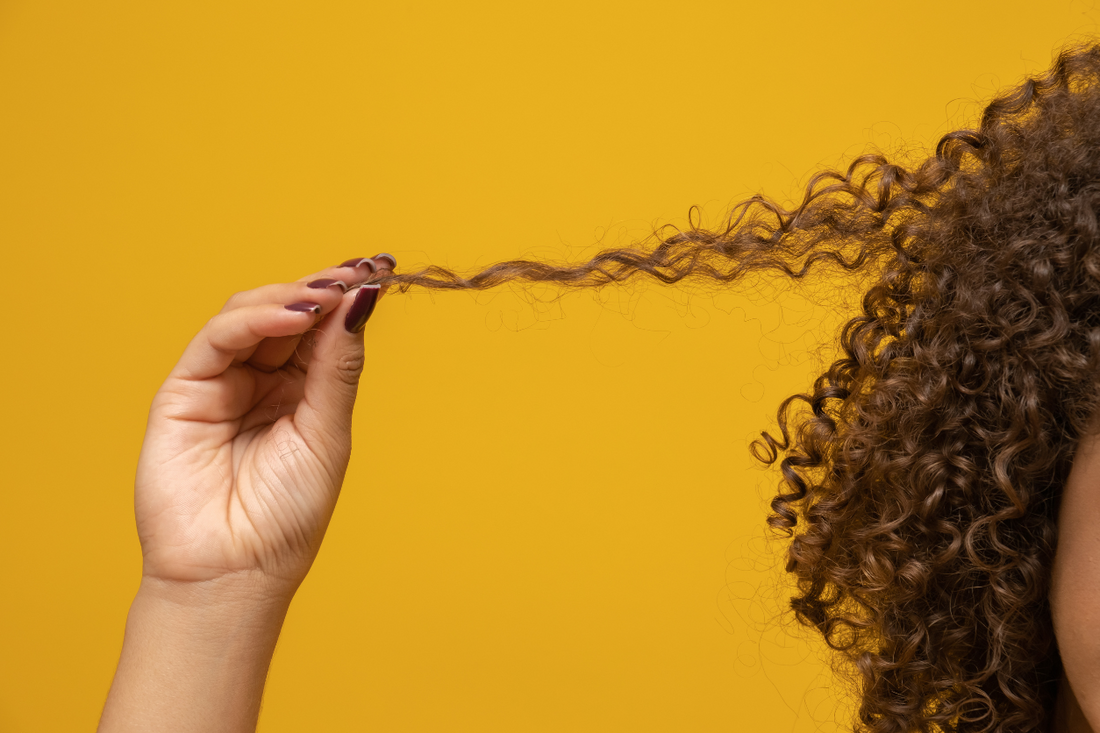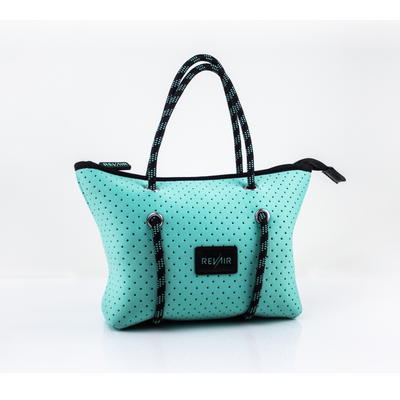
Understanding Hair Elasticity

What is Hair Elasticity?
Why Elasticity Matters for Curly and Textured Hair

Assessing Your Hair’s Elasticity: The Stretch Test
How to Perform the Stretch Test:
- Start with a clean, slightly damp strand of hair.
- Gently hold a small section of hair between your thumb and forefinger.
- Stretch the strand carefully, noting how much it stretches and whether it returns to its original length once released.
Evaluating Results:
- High Elasticity: Hair stretches significantly (up to 50% of its length) and returns to its original shape without breaking. This is typically a sign of well-hydrated, healthy hair with a balanced moisture-protein level.
- Medium Elasticity: Hair stretches somewhat but doesn’t fully return to its original shape or breaks slightly. This suggests hair might need a balance of hydration and protein to restore elasticity.
- Low Elasticity: Hair does not stretch much at all and may snap immediately. This indicates a lack of moisture and possibly too much protein, or simply damage from styling, environmental exposure, or lack of proper care.
Understanding your hair’s elasticity level through this test can help you tailor your care routine to restore and maintain your curls’ health.
Factors That Affect Hair Elasticity
Various factors influence hair elasticity, including:
- Moisture Balance: Hair with a healthy level of moisture is generally more elastic. Dryness, caused by environmental exposure, excessive heat styling, or lack of conditioning, can weaken elasticity.
- Protein Structure: Protein, specifically keratin, is crucial for hair’s structure and resilience. While curly hair needs moisture to prevent dryness, it also needs the right level of protein to stay strong.
- Heat and Chemical Processing: Overuse of heat tools or harsh chemicals can damage the cuticle layer of the hair, reducing its elasticity and making it more prone to breakage.
- Environmental Exposure: UV rays, pollution, and cold or dry climates can impact hair’s moisture levels, making it harder to maintain elasticity over time.
- Hair Porosity: Highly porous hair may lose moisture quickly, which can lead to reduced elasticity. Assessing your hair’s porosity can be helpful when building a routine to improve elasticity.

Improving Hair Elasticity: Key Practices
If you discover your hair’s elasticity is lower than desired, don’t worry—there are several ways to improve it. Consistency in your hair care routine and focusing on moisture and protein balance can help restore elasticity over time.
Hydrating Deep Conditioners
Deep conditioning is a must for curly and textured hair types to help boost elasticity. Look for deep conditioners with ingredients like coconut water, aloe vera, and hyaluronic acid, which infuse curls with moisture and increase flexibility.
Recommended Routine: Apply a deep conditioner once a week or more, depending on your hair’s needs. To maximize the effect, use heat, such as a warm towel or a hooded dryer, to help the conditioning ingredients penetrate deeply into the hair shaft.
Protein Treatments for Strength
Protein is vital for building and maintaining hair structure. If your curls feel overly soft or break easily, a protein treatment might help restore balance and add strength. Look for treatments that include proteins like keratin, wheat, or silk proteins, which work to repair and fortify damaged areas in the hair shaft.
How Often to Use: Use protein treatments every 4-6 weeks or as needed. Avoid overusing protein treatments, as too much protein can cause hair to become stiff and brittle. Striking the right balance between moisture and protein is key for elasticity.
Moisturizing Leave-In Conditioners and Oils
Leave-in conditioners and oils help lock in moisture, which is especially important for textured hair that may struggle to retain it. Opt for leave-in products containing hydrating and softening ingredients like shea butter, coconut oil, or jojoba oil, which not only maintain moisture levels but also help smooth the cuticle, boosting elasticity.
Pro Tip: Use a leave-in conditioner on damp hair, followed by a small amount of oil, to create a moisture-locking barrier. The combination of leave-in and oil helps keep curls hydrated, making them less prone to breakage.
Regular Trimming to Prevent Breakage
Healthy ends play a significant role in elasticity. Split ends and breakage can hinder elasticity by making hair strands weaker and more prone to snapping. Regular trims help maintain curl structure, reduce tangling, and support elasticity by keeping the hair ends healthy.
How Often to Trim: Aim to trim your hair every 8-12 weeks, depending on your growth rate and styling practices. Regular trims remove damaged ends, preventing split ends from traveling up the hair shaft and affecting elasticity.
Protective Styling
Protective styling can help improve elasticity by reducing tension and manipulation on your hair, which often leads to breakage. Styles like braids, twists, and buns help protect curls from environmental stressors and keep hair moisturized longer.
Protective Style Tips: Make sure your hair is fully hydrated and detangled before styling. Avoid styles that are too tight, as excessive tension can damage the hair and affect elasticity over time.

Additional Tips to Maintain Elasticity
- Avoid Over-Washing: Washing your hair too frequently can strip natural oils that contribute to elasticity. Try to space out washes to retain moisture and avoid drying out your curls.
- Use a Wide-Tooth Comb or Fingers for Detangling: Curly hair is prone to tangling, but using a wide-tooth comb or your fingers can minimize breakage. Always detangle when hair is wet and conditioned.
- Limit Heat Styling: Excessive heat can cause protein bonds to break down, reducing elasticity. Try to limit the use of flat irons, curling wands, and blow dryers, or swap them for healthier alternatives like the RevAir Reverse-Air Dryer
Building a Routine to Boost and Maintain Elasticity
Consistency is key when it comes to maintaining and improving hair elasticity. To maximize results, follow a routine that balances hydration and protein, and make adjustments based on how your hair responds to each treatment. Here’s a simple regimen to consider:
- Cleanse with a gentle, hydrating shampoo every 1-2 weeks.
- Deep Condition with a moisturizing conditioner weekly.
- Use a Protein Treatment once a month to fortify hair structure.
- Apply a Leave-In Conditioner after each wash to maintain moisture.
- Seal with an Oil to lock in hydration.
- Protective Style to reduce breakage and support curl health.
Achieving Resilient, Elastic Curls
Understanding and improving hair elasticity can make all the difference in the strength, flexibility, and overall health of your curls. By balancing moisture, incorporating the right protein treatments, and practicing protective styling, you can boost elasticity, reduce breakage, and enhance the natural shape of your curls. Remember, every curl type is unique—listen to your hair’s needs, and embrace the journey to healthier, more resilient curls.














